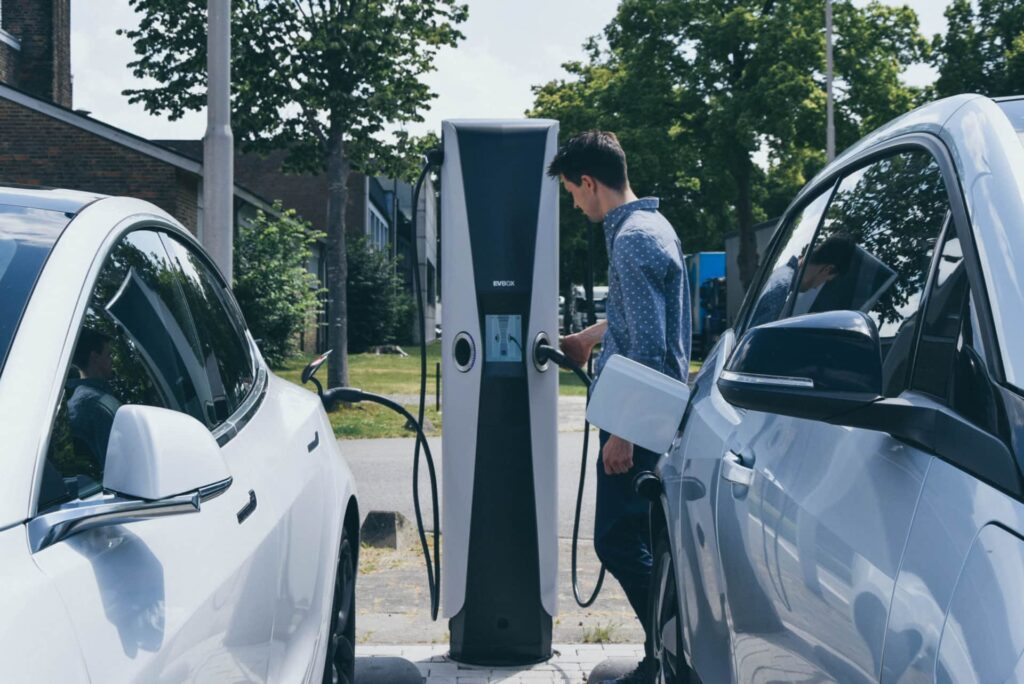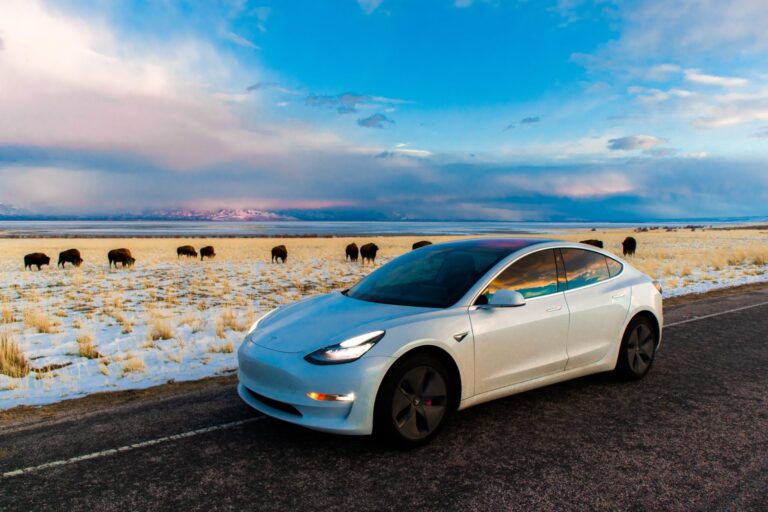Electrification has arrived. Cars, bikes, scooters — even Amazon fleets. The revolution away from internal combustion is officially underway, and it’s happening faster than we’d ever anticipated.
Early adopters are already on board with Tesla or the more modestly priced Chevy Bolt and Nissan Leaf. These brands are leading the pack with options for environmentally- and price-conscious consumers. At this pace, electric vehicles (EVs) are on track to surpass the internal combustion engine (ICE) in terms of sales as soon as 2030.
But even today, with 7.2 million EVs on the road globally, it’s clear that infrastructure to support battery-powered vehicles is in high demand.

The Last Straw
As EVs close in on price parity with ICE vehicles, the once prevalent cost concerns, along with the stigma of electric cars as a wealth and status symbol, are falling by the wayside. Understandably, consumers aren’t willing to pay much more than 10% more for an EV today, and this is quickly being mitigated by sinking battery prices; by 2023, EV prices are expected to come to par with their combustion counterparts in terms of price.
Range, however, remains one of the greatest barriers to EV adoption. Even with battery prices falling, average vehicle range increasing, and more makes and models of higher range EVs coming to market every year, would-be adopters are still somewhat apprehensive around making the change due to a visible lack of EV charging infrastructure to support them.
That’s where you come in.
To make going electric a realistic choice for the average consumer, they need confidence in where they’ll be able to charge. For ICE drivers, there’s always a gas station right around the corner and even on long trips, a rest stop always seems to be within range. But for electric cars, there’s more uncertainty.
Easing that uncertainty will be a big push. Between now and 2030, an estimated $3 trillion will be invested in EV infrastructure to support the mounting demand for charging, according to Goldman Sachs. ($3 trillion that you might be able to tap into to offset the cost of installing EV charging stations at your location, but we can get into that later.)
To make charging stations as ubiquitous as gas pumps, growing networks of commercial Level 2 and DC-fast chargers are emerging all over the globe.
Global EV charging pioneer, EVBox, is leading that charge in cities like Amsterdam where EV adoption is already above the global average. There, EVs line streets and canals, stacking up by the dozens in parking garages and surface lots. The massive infrastructure project has made it exponentially easier for EV drivers in the Netherlands to access the charging equipment they require, enabling more people to comfortably consider driving electric. Parking, as a host for the growing number of charging stations needed to meet user demand, is a critical part of the conversation.

Power Parks Here
While one of the most popular places to charge remains at home, users still rely on their place of work or public parking spots for 25-35% of their charging needs.
Parking garages at office buildings, public garages and city street parking, gas stations along major travel corridors — all of these traditional parking facilities will soon be experiencing an influx of consumers looking for a place to charge.

2020 Vision
The events of this year have only further disrupted the way people think about how they move. Former commuters working from home are seeking out different criteria when it comes to a car. Air travel is down, but the road trip has resurfaced as a fun, safe, and socially distant way to get away. This fall, 80% of travel is expected to be on the road. EVs are primed to step in and capture new markets as consumers actively rethink how they use cars. And consumer demand for charging will follow close behind.

Full Speed Ahead
In 2023, we expect 7% of global car sales to be electric. That’s 5.4 million more EV drivers on the streets in the next few years. And every one of these drivers consider charging the single most important criteria in choosing where to park.
By 2040, EVs will account for 58% of new car sales. In places like California, where ICE car sales are banned, that number will be 100%. And ultimately, with 31% of cars on the road being electric, charging will be as important as gas is today.
For our communities and the air we breathe, that’s a great thing. The well-to-wheel efficiency of EVs is consistently greater than ICE cars, even when our grid is powered by crude oil. And as we turn to more sustainable energy sources like wind and solar, the efficiency only improves.

In the Driver's Seat
The EV revolution is here and it’s only speeding up. That’s why FlashParking has partnered with EVBox to bring powerful charging offerings to your garage today. Getting ahead of the curve with EV services now is an opportunity to capture those early adopters and help them form charging habits that revolve around your business.
Going electric is the clear choice for smart cities, smart businesses, and smart consumers. Which means it’s the clear choice for smart parking, too. There’s no other industry with the existing infrastructure to support the enormous growth in EVs that’s right around the corner.
You can wait until EV is the new standard. Or, you can get on board today by installing charging stations and attracting those early adopters. The former means playing catch up in a year or two when EV charging becomes the norm, along with a more expensive initial investment. The latter option gives you an opportunity to grow your audience and diversify your revenue today while potentially saving thousands on your investment.

Lead the Charge: How adding EV charging to your parking facility impacts the community and your bottom line.
In this eBook, we explore key decision-making factors and criteria that you’ll encounter as you evaluate this opportunity. Download it today to put EV and the future of your asset in reach

